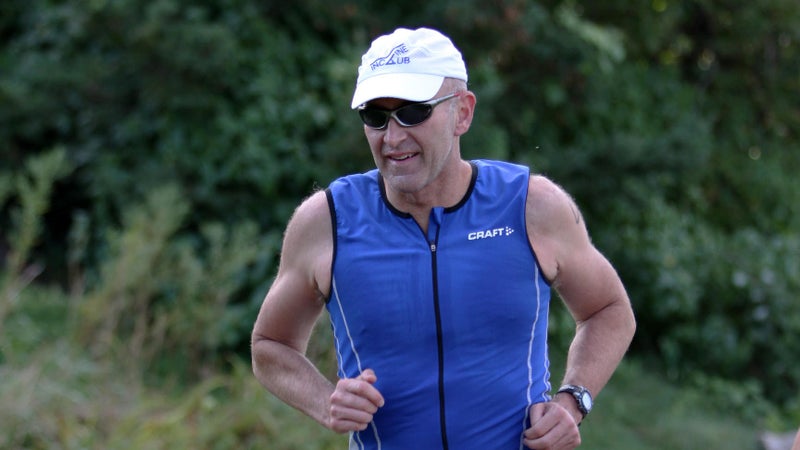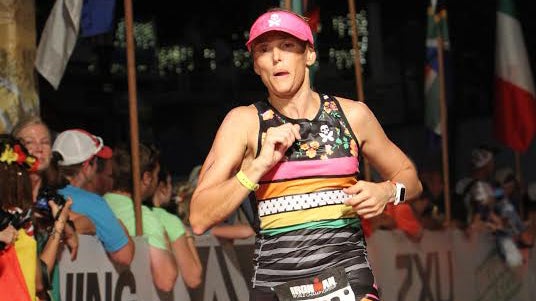No athlete looks forward to getting older, and although our peaks vary by sport—as early as 14 for gymnasts and as late as 38 for endurance athletes—eventually we all slow down. On average, our physiological function begins to decline at age 26. Some handle this inevitability with grace and grit, continuing to embrace a competitive spirit and enjoy an active lifestyle. Others, meanwhile, turn to the illicit use of performance-enhancing drugs or quit sports altogether. The difference: attitude.
“Someone’s attitude makes a huge difference in whether or not they stick with a sport or quit as they get older,” says Jessica Bunce, a clinical sports psychologist in Cincinnati, Ohio, who works with elite and recreational athletes. An athlete who is driven from within, who competes primarily for the joy of the sport and against themselves, she says, is significantly more likely to adapt their goals to the changes that accompany aging, as opposed to someone who is motivated by external results or recognition.
Interestingly, though your attitude may determine what becomes of your sporting lifestyle when you’re older, you often develop one of these two mindsets when you’re young. “The kids whose parents pressured them to play or who were always obsessed with their ranking and results tend to really struggle later on in life when their performance starts to decline,” says Bunce. “But those who pursued sports predominantly for the love of the game when they were young tend to have a much easier time with aging.”
“Aging may slow you down, but it need not take your identity as an athlete.”
People can shift their mindset from one driven by external performance to one driven by “internal fulfillment, health, and vitality,” Bunce says. Rather than try to fight aging, she encourages athletes to embrace it as a part of life and view it as a challenge and opportunity to focus on strategy and tactics, lean heavily on the wisdom they’ve accrued over the years, and try new sports. Do this, says Bunce, and you’ll see physical and psychological benefits: lower rates of injury and a dramatic reduction in stress.
In the end—and regardless of age—it’s important to remember that being an athlete is about more than qualifying for the Boston Marathon, counting the number of peaks you’ve bagged, or setting new CrossFit personal bests. It’s every bit as much about personal growth, community, and having fun. “Aging may slow you down,” says Bunce, “but it need not take your identity as an athlete.”
To learn more about aging well, I reached out to four veteran athletes with diverse backgrounds and at various life stages. Their collective wisdom brings to life the advice above.
Michael Joyner, 59, is a physician-researcher and expert on human performance at the Mayo Clinic. At age 20, Joyner ran a 2:25 marathon in minimalist shoes. Today he’s happy to run a few miles, outfitted in army boots to accommodate a chronic condition in his feet.

We all slow down, and for people who are competitive, there can be a bit of denial. But sooner or later, everyone either accepts it or gets caught in a cycle of injury after injury from trying to push beyond what their bodies can handle. After you get to acceptance, you can calibrate where you are and set new goals like holding off frailty, maintaining your independence, and being able to participate in water-balloon fights with the kids. You can also try new sports and activities and enjoy attempting to master something new. Eventually, you get to a truly minimalist approach, which is about just trying to do something active most days. I always come back to what the famous running coach Jack Daniels once said: “Ask what the purpose of your workout is.” I think it’s wise to extend this thinking to a larger context and ask: What’s the purpose of your active lifestyle?
Jordan Blanco, 45, is an entrepreneur and age-group triathlete who lives in San Francisco, California. She came into triathlon a little later in life, at age 30, and set an Ironman PR of 10:33:06 at age 37. But she’s starting to realize that her best times might be behind her.

While my body may age, weaken, and slow down, I have so much knowledge and wisdom accumulated from all the years of training and racing. I can stem the decline in performance through better, smarter training and through knowing myself. What’s the old adage? Train smarter, not harder? I’ve learned to pay more attention to sleep, diet, strength training, and the precise details of my overall plan than I might have in my 30s. I also have more cash flow, which means I can finally afford fancier equipment to keep me on the cutting edge of speed. Lastly, instead of judging myself against prior versions of myself, I compete against other women in my age group. I’m seeing more “success” in my 40s than in previous decades because many of my fellow competitors have dropped out…or I’ve just slowed down less.
Christie Aschwanden, 41, is a writer and all-around athlete who lives in Cedaredge, a small town in western Colorado. During her 20s and early 30s, she competed internationally for sponsored teams in both Nordic skiing and cycling. Today, Aschwanden is still insanely active, but for different reasons.

I don’t care so much about performance now as I did in my 20s and early 30s; I care about how I feel. I still love to race, but I am in a different place. The absolute numbers just don’t matter as much anymore. What does matter is having that wonderful feeling that I get from a great day of trail running or skate skiing, and that means maintaining enough fitness so I can do what I want to do without it turning into a death march. I love the feeling of being fit, and more than anything, that’s what I want to hold onto as I age.
Amby Burfoot, 70, is an editor at large for Runner’s World. In the late 1960s and early ’70s, Burfoot was not only a pioneering health and fitness writer but also a pioneering distance runner. At age 21, he won the Boston Marathon with a time of 2:20:17. Nowadays, Burfoot still runs a solid weekly volume, but he’s content to push a little less hard—most of the time, anyway.

I run about 30 miles a week. Sometimes I think about increasing my training to 50 or 60. Physically, I feel that I could do it. Mentally, maybe. But I don’t actually pull the trigger. I’m in a groove where I’m running fine, physically really strong, not a hint of an orthopedic problem, so why ruin a good thing? One thinks a lot like this at age 70. Maybe it’s the best way to think. Still, I would like to be faster. It’s not that I believe I would win anything significant. There are too many really impressive runners at every age. But my performances have tailed off over the past six or seven years, and I’d like to get them back where I think they should be. It’s a real challenge to balance my obsessive nature and drive to get better with also wanting an enjoyable relationship with running. I think about this stuff all the time.
Brad Stulberg (@Bstulberg) writes Outside’s Science of Performance column and is a co-author of the forthcoming book Peak Performance.

